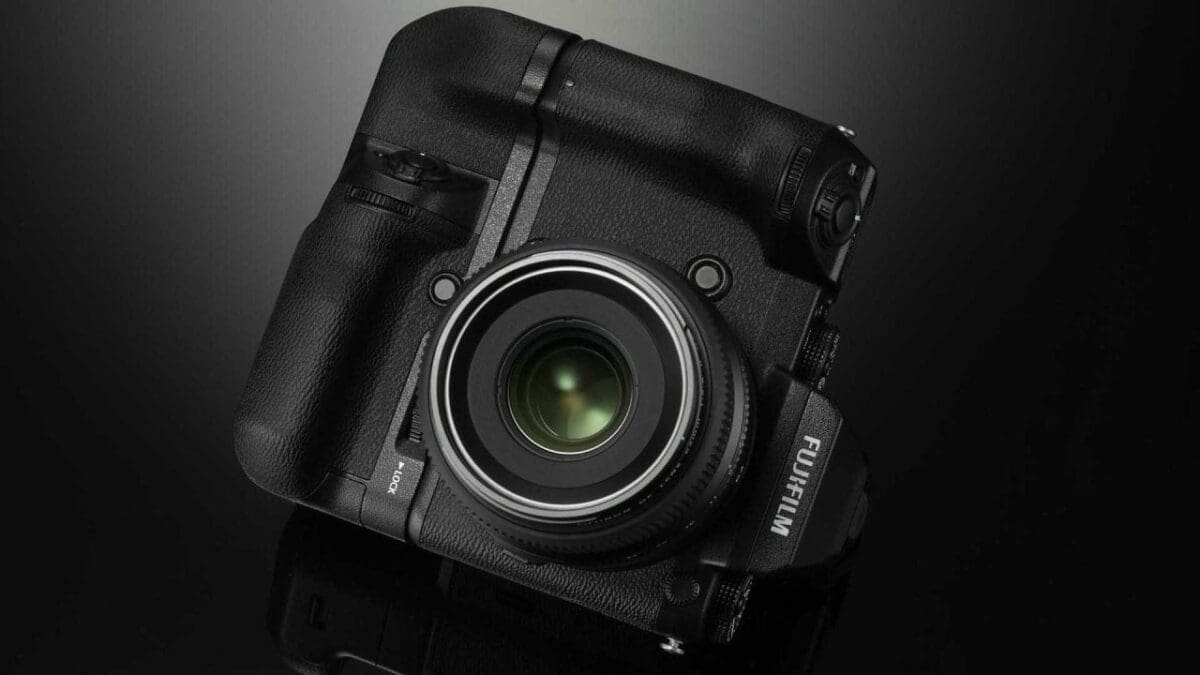If you ask anyone to list the biggest surprises of 2016, somewhere in between Donald Trump’s victory and Brexit will sit Fuji’s new GFX system. Well, any photographer’s list, that is!
It was a surprise to many people in the industry when Fujifilm introduced its new mirrorless medium format system at the biannual Photokina trade show. In the age of ‘affordable’ full-frame, a 35mm sensor seemed the logical next step, much like Sony did a few years prior with its A7 series.
But Fujifilm skipped over full-frame entirely… and we can kind of see why. Canon, Nikon, Sony and Pentax all offer quality full-frame cameras, so why nudge into an already crowded market space and compete for an already divided pie?
Instead, Fujifilm has chosen to let them continue their internecine struggle, while at the same time introducing a product that neither of those manufacturers (save for Pentax) currently offer. You could say it’s a stroke of marketing genius!
And, of course, the other motivation for such a move was what Fujifilm itself told us at Photokina last year: its APS-C-size X-Trans sensors are just as good as full-frame.
Frankly, in many instances they are. And Fuji believes a full-frame system would undercut the remarkable achievements its X-series cameras have made.
But the Fuji GFX isn’t the only digital medium format camera you can buy. A handful of other products also exist, each with their own unique attributes.
It’s been a market that has grown slowly over the years, but we wouldn’t be surprised to see it suddenly take off as sensor technology improves even further.
But the Fuji GFX 50S is the new kid on the block, and as such we took a quick look at how it compares against its competitors.
Fuji GFX vs Hasselblad X1D
The Hasselblad X1D is mirrorless just like the GFX 50S, and it also offers 50-megapixel resolution along. The X1D is probably the GFX system’s closest competitor and is most likely the alternative you’d be considering if you were making the jump up to medium format.
Being a mirrorless camera, the Hasselblad X1D offers a lot of the same flexibility that comes with the GFX, such as a smaller body design, a touchscreen and built-in Wi-Fi.
The X1D is even smaller than most small format full-frame DSLRs you’ll find on the market.
But for all its flexibility, it’s probably not as versatile as the GFX 50S. What really stood out for us in initial tests with the GFX 50S was its simple interface.
Because it employs the same menu system as Fuji’s X-series cameras, those making the jump up will have a much easier time. The process will seem intuitive and there should be less of a learning curve if you’re already familiar with using Fuji cameras.
The GFX 50S is also a little bit smaller and incorporates a very novel detachable viewfinder and tilting adapter, opening up all sorts of images to the big resolution of medium format photography that once would have been – quite literally – out of reach.
Fuji GFX vs Pentax 645Z
Fuji wasn’t the first to take this approach to its menu system. The Pentax 645Z is the company’s second iteration of its digital medium format offering, and help its loyalists transition upward Pentax introduced a menu layout very similar to its K-series DSLRs.
In fact, if you’ve ever shot with a DSLR of any make you’ll find the Pentax 645Z quite intuitive to use. But it’s also the largest camera you’ve probably ever used!
It is, quite frankly, a beast. The Pentax 645Z is designed like a traditional SLR camera, but a bit larger and bulkier. It’s significantly heavier than the GFX 50S or Hasselblad X1D, and not the most portable of cameras.
Depending on what you shoot, or where you go to get your pictures, this could be a significant factor to take into consideration.
Fuji GFX vs Phase One XF 100MP
If big resolution is what you’re after, then Phase One’s XF 100MP trumps everything else on this list. As its name suggests, the XF 100MP pairs a 100-million-pixel digital back (the Phase One IQ3) with a Phase One XF body.
Another intriguing feature is its modular design, allowing photographers to take some control over the camera’s key elements. With Phase One’s XF system you can remove and swap the digital back, the lens, even the viewfinder for a camera that’s more tailored to your needs.
None of the other medium format cameras we’ve mentioned here – not even the GFX 50S – can come close to this. Of course, 100-megapixel resolution and that level of control don’t come without a hefty price tag. And by ‘hefty’ we mean about £35,000!
And while not quite as mammoth as the Pentax 645Z, the Phase One XF 100MP is still rather large.
So whether the Phase One X100MP is right for you really depends on what you’re doing with your images.
I suspect that if you’ve found this post by searching for which medium format camera to buy, you’re probably not already printing billboard-size advertisements. And that’s fine! Few photographers do.
So if you’re not selling enormous prints or getting commissioned to shoot major ad campaigns, you can probably settle on a reduction in resolution to 50 million pixels (which is still quite amazing) for the GFX 50S price tag.
And when you factor in that Fuji’s new camera is also smaller and lighter, it’s even more appealing!
However, I’d just add in closing that 100-megapixel resolution in a more affordable body probably isn’t too far off. Look how many cameras now offer 50-megapixel resolution.
In the next couple years this will be the standard, and by the end of this decade I wouldn’t be surprised to see the next flagship full-frame cameras and consumer medium format models offering 100-megapixel sensors.



